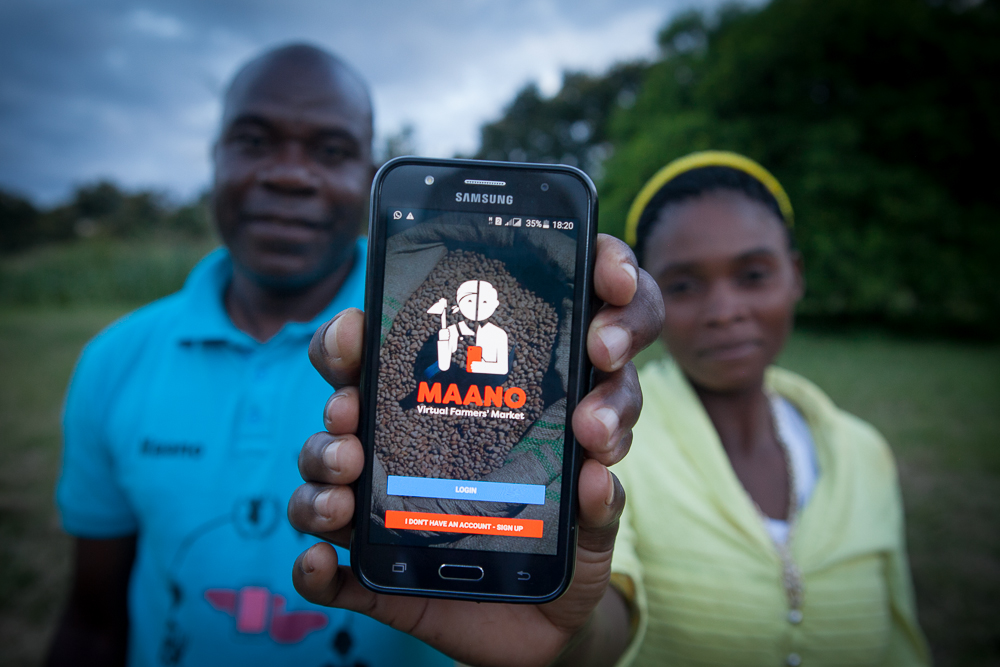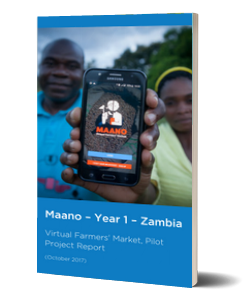
Case study

Case study
The World Food Programme created an app, Maano, which connects rural farmers in Zambia with market data and buyers. They used Collect, our mobile data collection platform, to monitor and evaluate the impact of their pilot.
Across Africa, millions of rural smalholder farmers are stuck in poverty. Because rural agricultural markets are decentralized and farmers don't have access to real-time market information, they are forced to sell their crops to local middlemen for low prices. This information asymmetry prevents farmers from scaling their businesses and increasing their income.
To solve this, the World Food Programme launched the Maano - Virtual Farmer's Market app. By giving real-time information on crop prices and connecting farmers to buyers, the Maano app creates a transparent, sustainable marketplace where farmers have more bargaining power and can finally get fair prices. WFP piloted Maano in 4 districts across Zambia to track and assess its impact.
I think Collect is really useful in getting information when we are running pilot projects. It is a quicker and easier way to collect data, and it is quite easy to use. The offline feature is especially impressive, especially when it comes to working in developing countries.
Innovator and Co-Founder of Virtual Farmers' Market (Maano) App
World Food ProgrammeDuring their pilot, the World Food Programme used Collect (our mobile data collection app) to monitor and evaluate the impact of the Maano app.
By equipping 50 "lead farmers" with Collect, the pilot successfully measured transactions between the lead farmers and the final buyers. At the same time, Collect was also used to collect economic and social data on "follower farmers" — farmers who connected to the virtual market through transactions with the lead farmers.
By uniting data from a range of surveys implemented through Collect onto a single platform, WFP was able to connect the dots between buyers, lead farmers and follower farmers, and to accurately assess the impact of their pilot program.
With everything from simple subjective questions to complex tabular questions, collecting comprehensive data was no problem.
Our simple web dashboard made creating a form as easy as writing an email. Admins could build a custom survey in no time.
Admins could set rules on numerical questions, geographic boundaries on GPS points, selection limits for multiple choice questions, and more.
Layers of skip logic made each form quicker and easier. Admins can choose to link together multiple questions, or even link entire forms.
Using Collect’s software, we are able to gather data from rural smallholders farmers who have never provided data before. What’s more, the data they are providing is highly detailed, granular, real-time and geo-specific. We’re using the insights it provides to adapt the project’s design to ensure Maano is helping the most vulnerable farmers in these communities.
Maano Co-Creator and Manager
World Food ProgrammeWFP's surveyors were farmers from rural Zambia, so sometimes they were not very tech savvy. Collect’s intuitive interface ensured that no one has a problem collecting data.
WFP's lead farmers often didn't have internet access. As they collected data, it was saved in local storage, then synced with central servers when internet became available.
Monitoring made it easy to track data for different farmers. They just selected each farmer from Collect’s repository, then updated his or her data.
In rural Zambia, farmers didn't necessarily have access to high-end phones. Collect worked seamlessly even on outdated, cheap Android phones.
The pilot enabled 50 lead farmers and nearly 1200 follower farmers to successfully close 100 transactions through the app, trading 50 metric tonnes of pulses at a total value of $47,000.
Armed with these encouraging stats, based on data collected through Collect, WFP is expanding the project to reach 500 lead farmers and 25,000 follower farmers.

When analysing big data, one of the major setbacks is data sorting time. I am particularly impressed with how much Collect reduces data sorting time with its data download options. The data is already sorted, ready for analysis.
Maano Data Analyst
World Food Programme